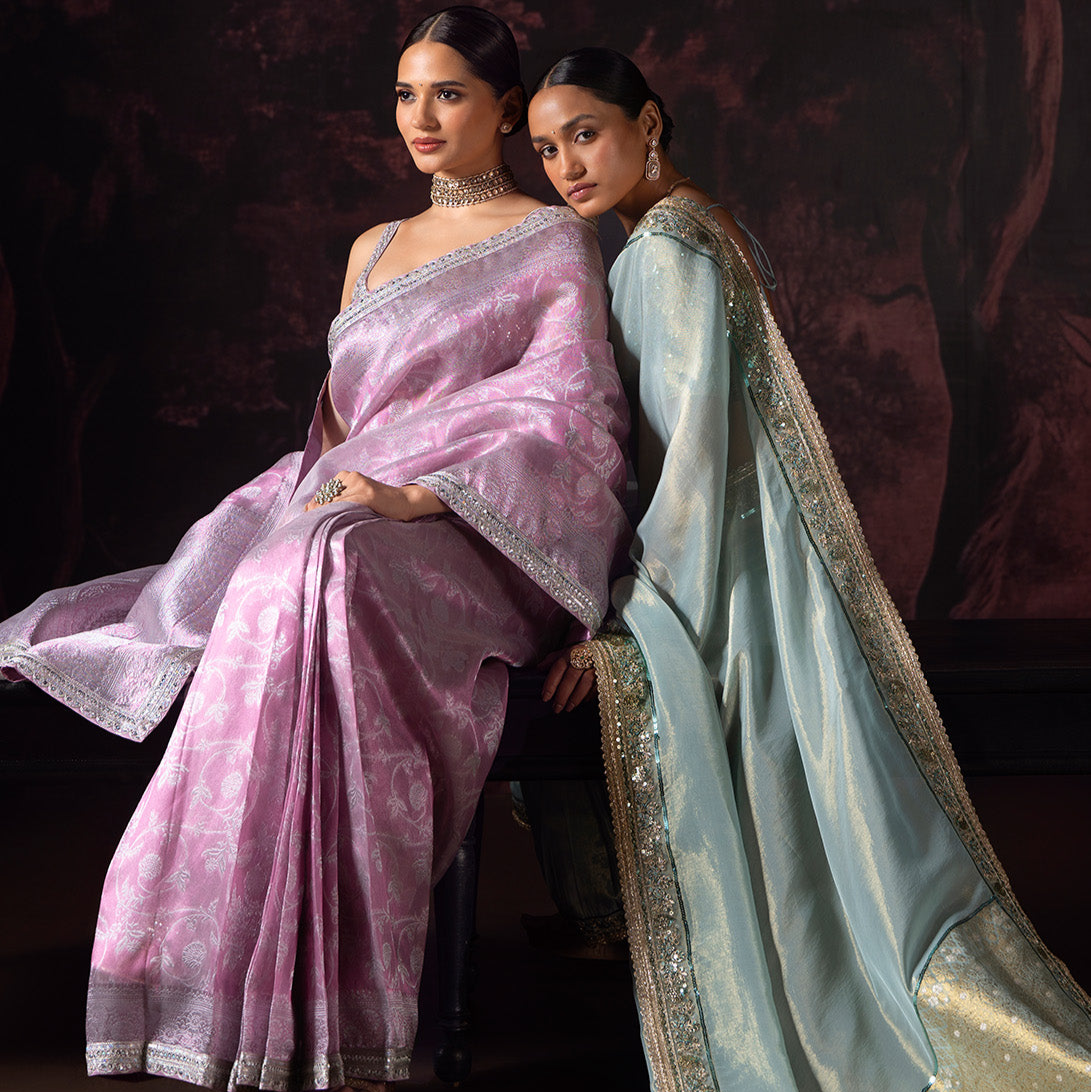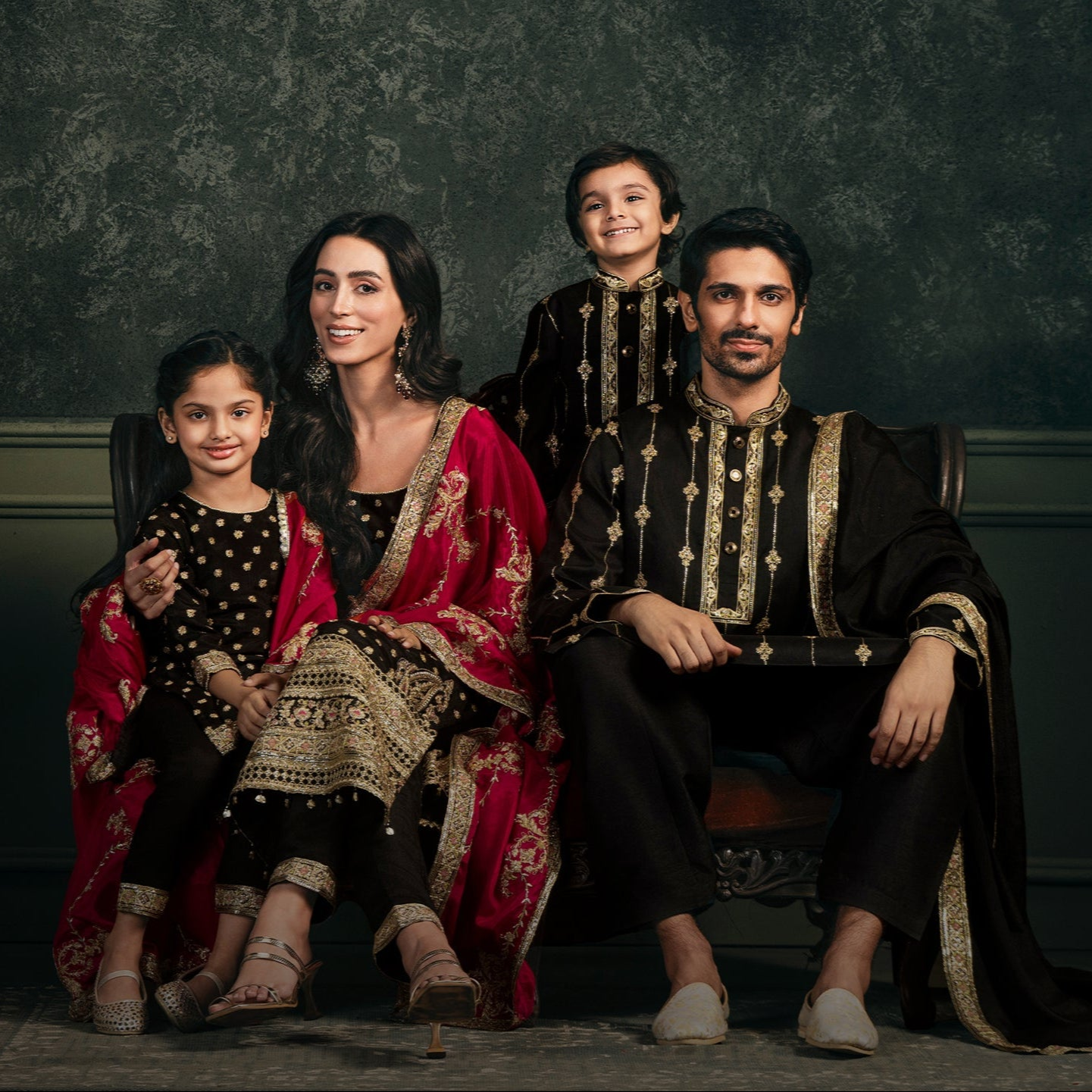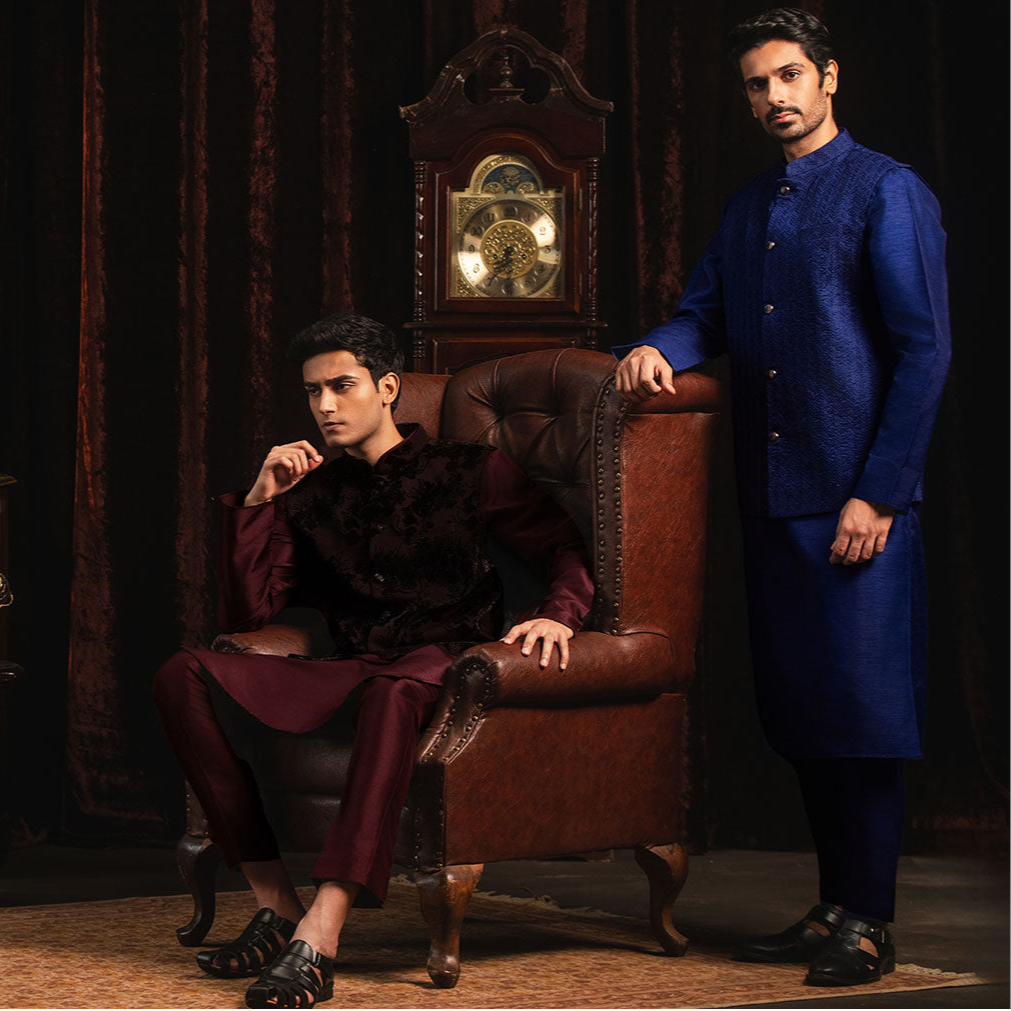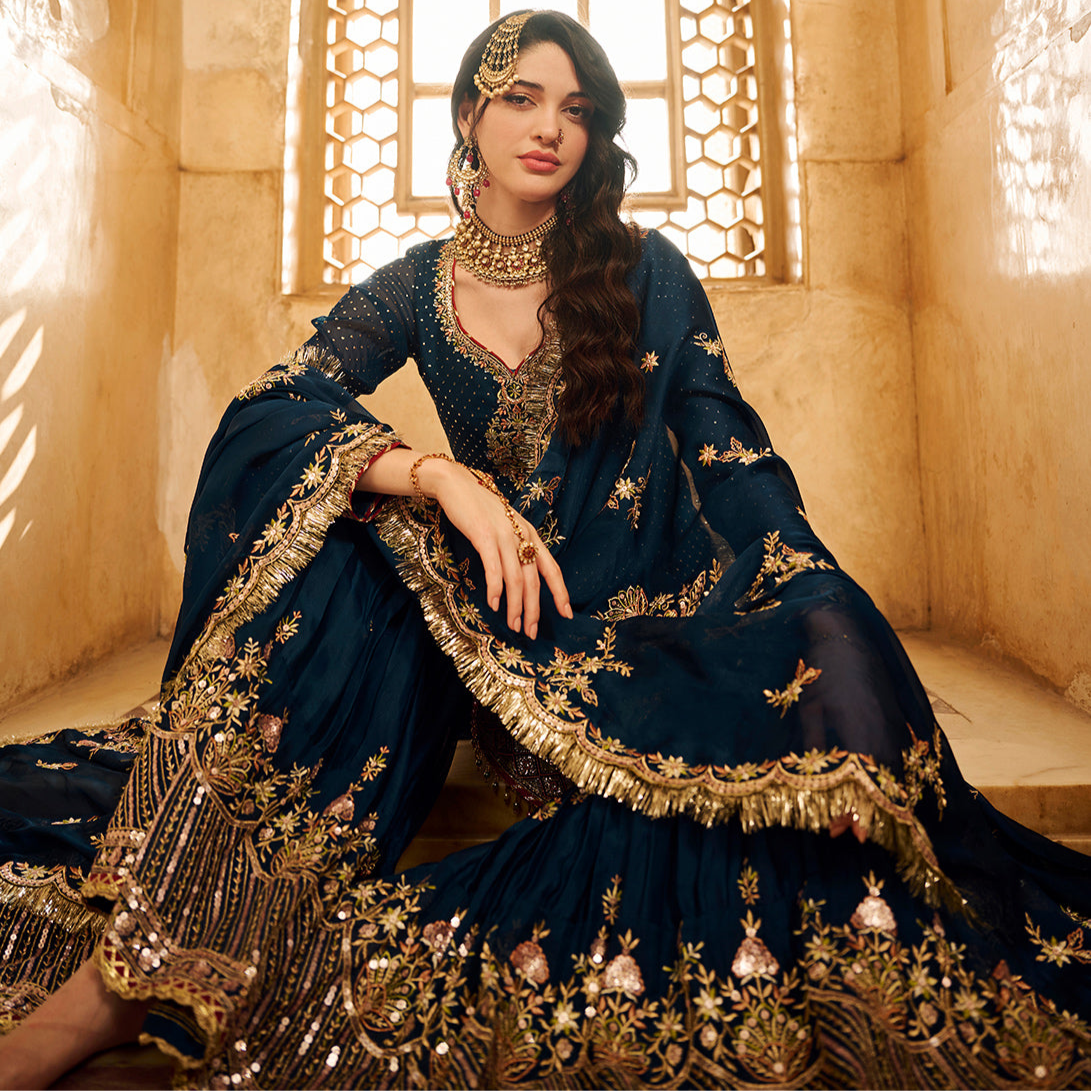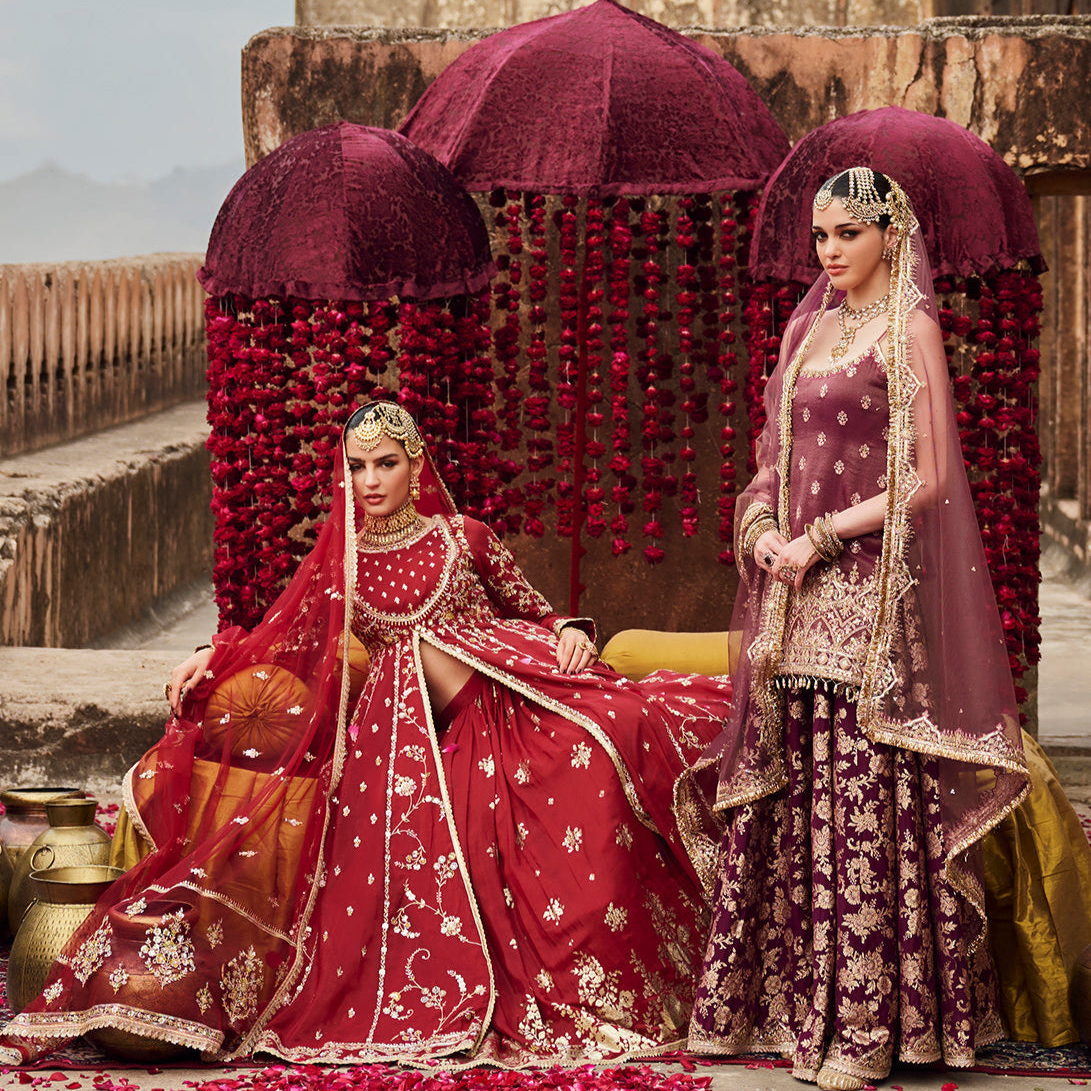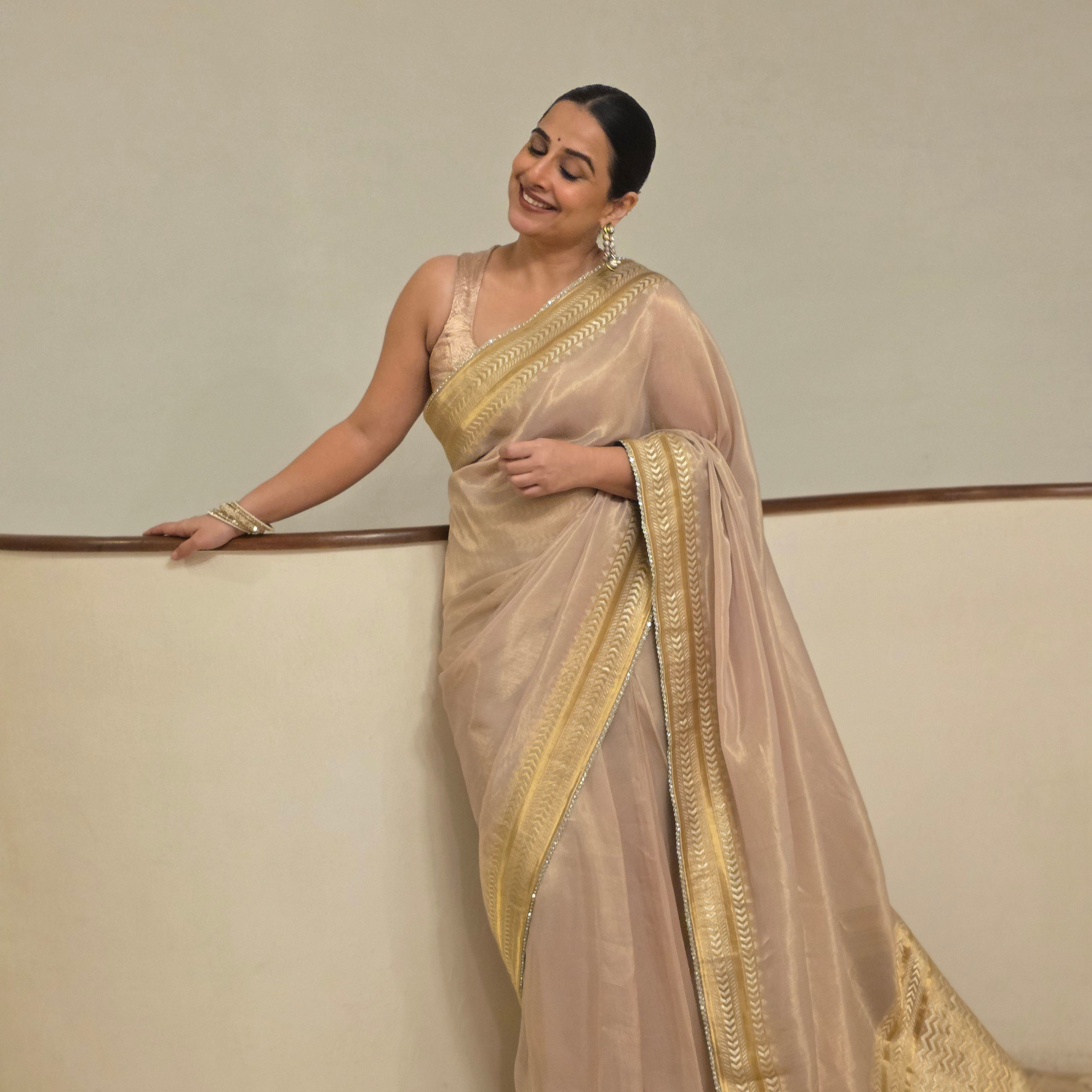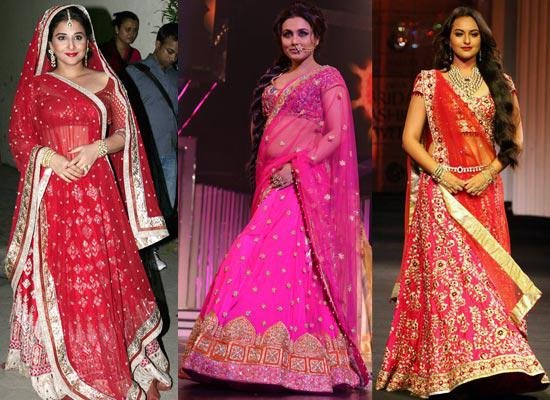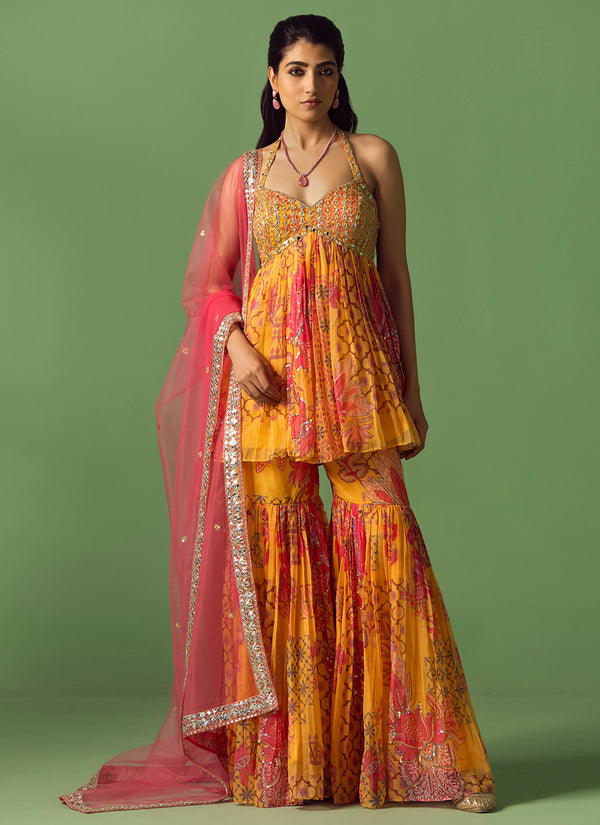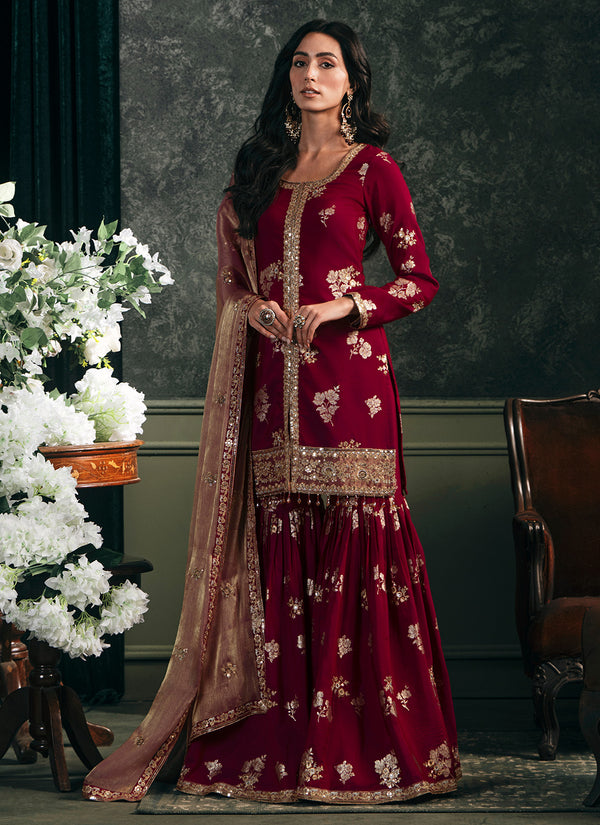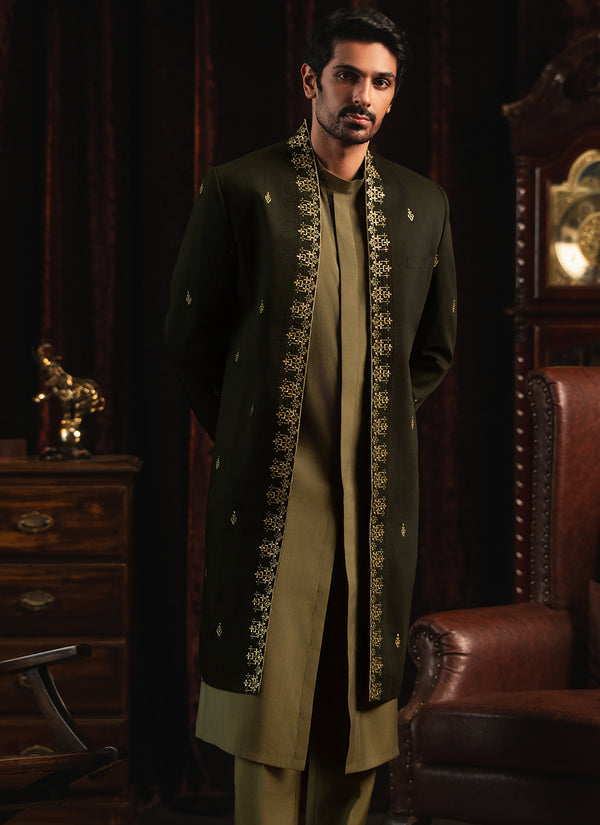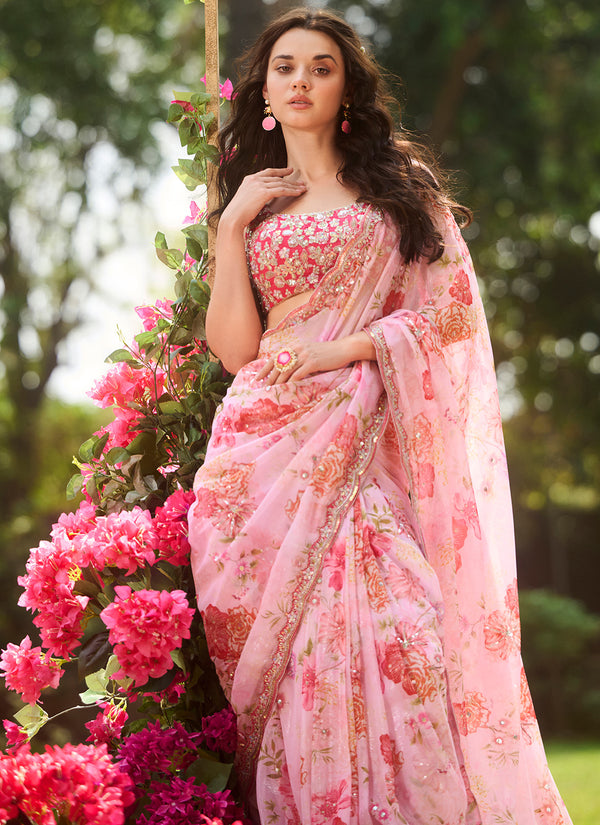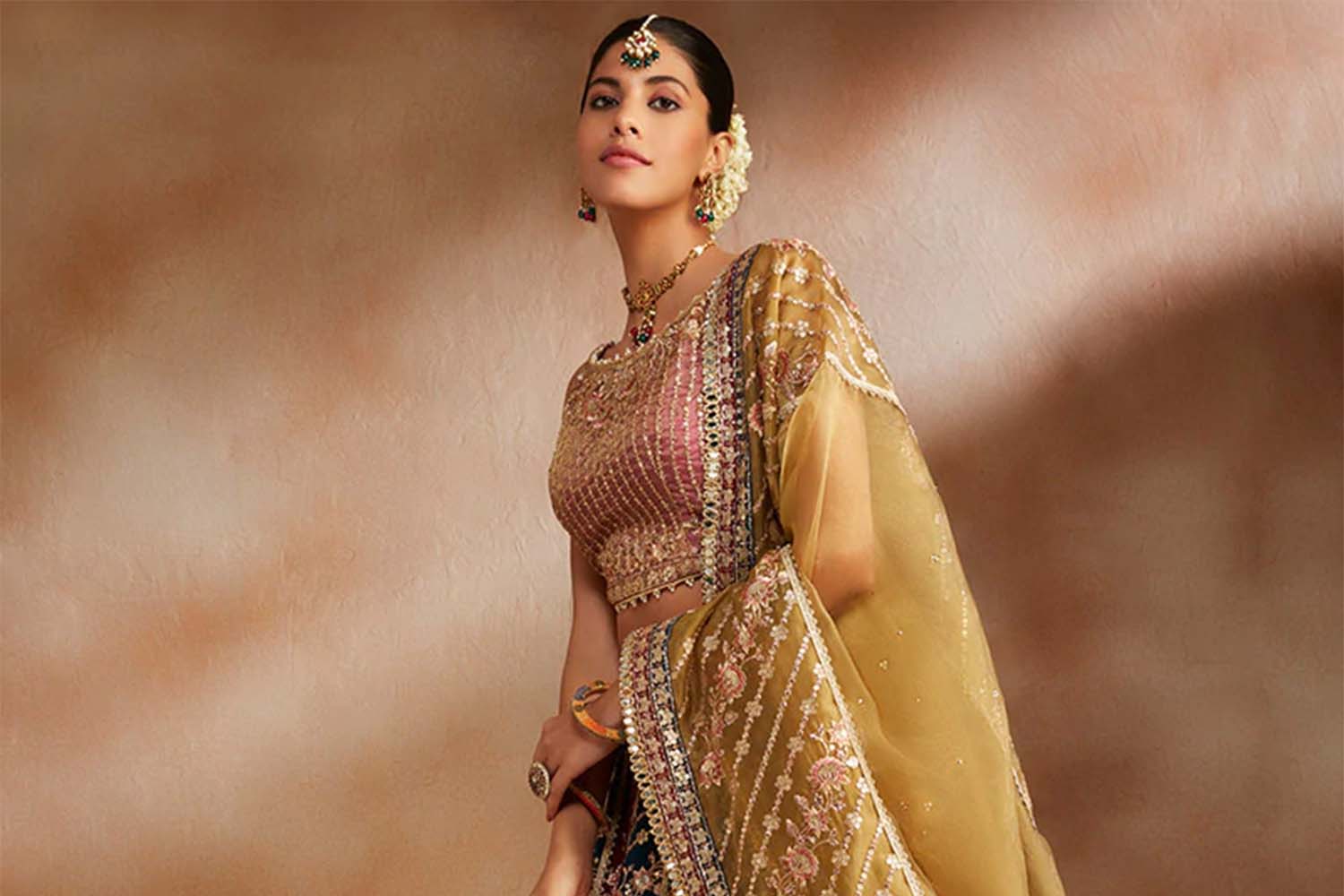
Lehenga vs. Saree: What To Wear & When
Choosing between a lehenga or a saree can be a dilemma, especially for special occasions. Both are iconic pieces of Indian fashion, deeply rooted in tradition, yet evolving with time. Whether you're a bride, a wedding guest, or attending a party, this guide will help you decide when to wear a lehenga or a saree and which best suits your style.
What Makes a Lehenga: Set Pieces,
A lehenga is a three-piece ensemble consisting of a flared skirt, a fitted blouse (choli), and a dupatta. Originating from the Mughal era, lehengas have become a popular choice for weddings and festive occasions. The skirt is often heavily embroidered, offering a regal and grand appearance. Available in various fabrics like silk, velvet, georgette, and brocade, lehengas can range from minimalistic designs to opulent, heavily embellished styles.
Lehengas are known for their versatility in design and structure. The skirt can vary in shape—A-line, mermaid, or circular—giving you the freedom to choose a silhouette that complements your body type. The blouse can be as traditional or contemporary as you prefer, from classic high-neck designs to trendy off-shoulder or halter necklines. The dupatta completes the look, often draped elegantly over the shoulder or styled in more modern ways, like a cape or belt-draped look.
What Makes a Saree?
The saree is a long piece of fabric, typically ranging from five to nine yards, draped around the body in various styles. It's paired with a blouse and a petticoat to hold the drape in place. Originating in ancient India, sarees have stood the test of time and continue to be an integral part of Indian culture.
Sarees come in different fabrics like silk, cotton, chiffon, and organza, each offering its own appeal. Some sarees are light and airy like the brand’s White and Pink Floral Organza Saree, perfect for casual wear, while others are heavily embroidered or woven with zari work, ideal for festive occasions. A saree’s versatility lies in how you drape it—whether it's the traditional Nivi style or more experimental styles like the Bengali or Maharashtrian drape.
The blouse plays a crucial role in enhancing the saree look, and like a lehenga choli, can vary from conservative full-sleeved styles to contemporary sleeveless or backless designs.
Lehenga vs. Saree: Which Should You Wear?
The choice between a lehenga and a saree largely depends on the occasion and your personal style. Lehengas offer a more structured, youthful, and often more dramatic appearance. Their voluminous skirts add a fairytale-like flair, making them perfect for grand occasions such as weddings or festivals.
On the other hand, sarees provide a timeless elegance. The fluidity of the fabric and the drape lend an air of sophistication and grace that’s hard to match. Sarees are a better fit for events that require subtlety and tradition, although modern designers have created sarees that can be just as dramatic as lehengas like Lashkaraa’s Ombre Blue Ruffled Chiffon Saree.
What Should You Wear to Parties?
For parties, your choice between a lehenga or a saree will depend on the theme, formality, and your personal comfort. A lighter, more contemporary lehenga like our White and Lavender Floral Printed Lehenga works well for cocktail parties or festive gatherings, especially if you want to experiment with bolder designs, cuts, and drapes. Partywear lehengas often feature lighter fabrics like georgette, crepe, or chiffon, making them easy to move in while still offering a glamorous look.
Sarees for parties tend to be on the simpler, more stylish side, with minimal embellishments or sleek drapes like chiffon or silk. For a contemporary party look, you could opt for a saree with a designer blouse featuring unique cuts, embellishments, or even metallic tones. Sarees are excellent for semi-formal events where you want to maintain elegance without going overboard.
What Should You Wear on Special Occasions?
When it comes to special occasions such as religious festivals, anniversaries, or milestone celebrations, both sarees and lehengas can be suitable depending on the nature of the event. A lehenga is perfect for a more festive or opulent occasion. If it’s a Diwali celebration or an anniversary dinner, you can never go wrong with a colorful, embroidered lehenga like Lashkaraa’s White Multicolor Floral Printed Lehenga with matching accessories.
Sarees, however, shine in traditional settings like religious ceremonies. A Banarasi silk saree or a Kanjeevaram with intricate weaving work can make a striking impression while still adhering to the cultural tones of the event. Sarees are often the go-to attire for family events, cultural gatherings, or any occasion with a traditional theme, offering grace and sophistication.
What Should You Wear to Indian Weddings as a Guest?
Indian weddings are grand affairs, and choosing what to wear as a guest can be as challenging as deciding for the bride. For wedding guests, both lehengas and sarees are popular choices, depending on the function and your role.
For the wedding ceremony itself, sarees are a traditional choice, especially for close family members of the bride and groom. Opt for a silk saree with zari work or an embroidered saree in luxurious fabrics like georgette or organza. You can also experiment with saree draping styles to stand out while maintaining a classic look.
Lehengas are perfect for pre-wedding events like sangeets, cocktail parties, or reception dinners. Choose a lehenga with minimal embellishments for a subtle yet elegant look. Pastel shades, floral motifs, and mirror work are trending for wedding guest outfits, offering a modern take on this traditional attire.
What To Wear as an Indian Bride?
As a bride, the choice between a lehenga and a saree is influenced by regional traditions, personal preferences, and the type of wedding you envision. Brides in North India often choose heavily embroidered lehengas with intricate zari, mirror, or sequin work. Bridal lehengas are grand, with flared skirts and luxurious fabrics like velvet, brocade, or silk. The Magenta Multicolor Embroidered Lehenga is a vibrant and eye-catching ensemble, adorned with intricate embroidery that adds a festive, regal charm. Popular colors include traditional reds, maroons, or pinks, though modern brides are experimenting with pastels and unconventional hues like emerald green or lavender.
In South India, many brides opt for sarees, particularly Kanjeevaram or Banarasi silk sarees, which are considered symbols of prosperity and elegance. These sarees are woven with gold threads, making them perfect for a bridal look. The fluid drape of a saree adds a timeless elegance, with the bride often accessorizing with traditional jewelry like temple jewelry or gold necklaces.
For brides who want to mix traditional and modern, fusion lehengas or saree-gowns are popular choices. These outfits blend the classic drape of a saree with the structured elegance of a lehenga, offering the best of both worlds.
Choosing Your Perfect Attire: 4 Things To Consider
Choosing between a lehenga and a saree ultimately comes down to aligning your attire with the occasion, your personal style, and your comfort. The right choice can enhance your look and make you feel confident throughout the event. Here are a few pointers to help guide your decision.
The Event
First, consider the event. Grand celebrations like weddings, festive occasions, or religious ceremonies may call for more elaborate outfits, making lehengas an ideal choice. Their structured design and embellishments offer a regal look perfect for these settings. For simpler events or daytime functions, sarees often fit the bill better. Their versatility allows for both traditional and contemporary draping styles, suiting more understated or casual affairs.
Comfort
Next, prioritize comfort. While lehengas are generally easier to move in, especially during dance-heavy events, sarees provide a more sophisticated elegance. However, managing a saree can be a challenge for those unaccustomed to wearing one. If ease of movement is a concern, especially for longer events, a lehenga may be the more comfortable option.
Weather & Season
When selecting between the two, it’s also important to think about the weather and fabric. For summer weddings or outdoor gatherings, lighter fabrics like chiffon, georgette, or cotton are a better option in both lehengas and sarees. Heavier materials like velvet or brocade work well for winter or evening functions, providing warmth and a rich, luxurious appearance.
Try Something New
If you’re unsure or want to try something new, experimenting with modern styles can be a great option. Fusion outfits, such as lehenga-saree hybrids or pre-draped sarees, combine the best elements of both outfits. These allow you to enjoy the structure and convenience of a lehenga, while still achieving the flowing, graceful look of a saree. Pre-stitched sarees or gown-style lehengas also offer an innovative twist, ensuring that your outfit stands out at any event.
Find Your Fit
In the end, both lehengas and sarees are timeless pieces of Indian fashion, and the choice really depends on your personal preferences and the demands of the occasion. By considering the nature of the event, your comfort, and the weather, you can confidently choose the attire that best reflects your style.

